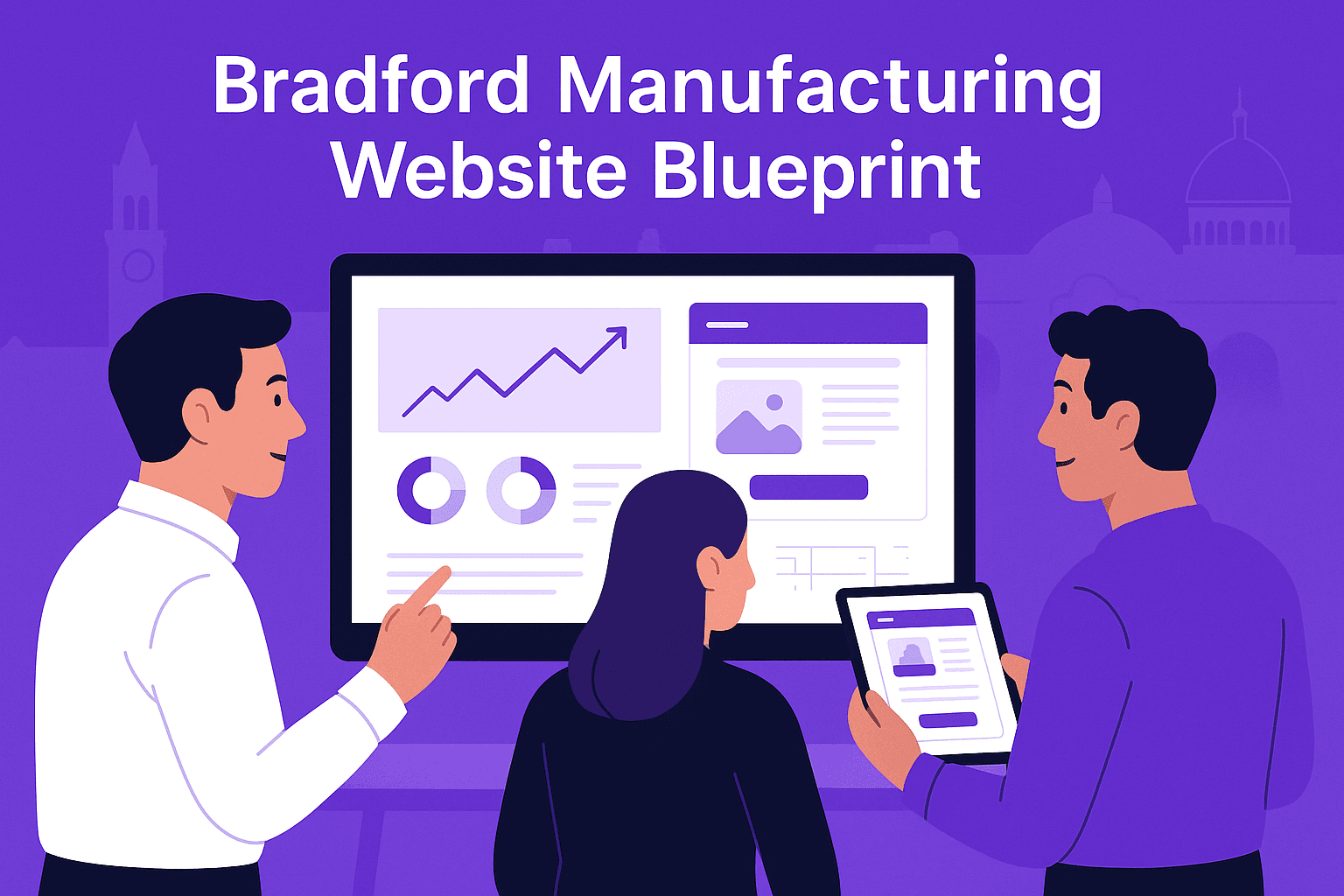AI-Assisted Web Design Workflow for Bradford SMEs
How Bradford agencies can combine human strategy with AI tooling to deliver faster discovery, UX, content, and QA—without losing compliance or brand voice.
Plenty of agencies shout about AI, yet their output is still static hero banners and lorem ipsum. This playbook shows how we actually deploy AI across Bradford web projects while keeping human insight in charge.
Step 1 – Augment Discovery
- AI research assistants: Feed ChatGPT or Claude anonymised meeting transcripts to extract recurring objections, jargon, and intent signals.
- Voice-of-customer clustering: Use tools like Viable or Idiomatic to group call-centre transcripts, Trustpilot reviews, and live chat logs.
- Competitor teardowns at scale: Crawl Xpand, Bluehoop, and national rivals with Sitebulb + GPT to tag component patterns, page depth, and speed issues.
Step 2 – AI-Assisted UX
- Generate flow maps in FigJam using AI plug-ins that convert prompts into user journeys.
- Leverage Uizard / Galileo AI to draft first-pass wireframes, then refine in Figma with brand systems.
- Run predictive eye-tracking (Attention Insight) to identify distraction zones before usability labs.
Step 3 – Content Sprinting
AI can accelerate copy, but only if you feed it proprietary data.
- Build a brand voice library (tone, structure, banned phrases) and inject it into prompt templates.
- Use Longform GPT or Jasper to draft service copy, but layer in local stats, case studies, and quotes manually.
- Translate pages with DeepL + human reviewers to serve Bradford’s multilingual audiences.
Step 4 – Development Automation
- Adopt component scaffolding tools (TeleportHQ, Locofy) to convert Figma to React while engineers handle logic and accessibility.
- Use GitHub Copilot for boilerplate but enforce linting, TypeScript strict mode, and human code reviews.
- Generate schema markup with AI prompts referencing real product/service data.
Step 5 – QA & Compliance
- Automate WCAG testing with axe-core CI plus manual screen-reader passes (NVDA + VoiceOver).
- Deploy synthetic user testing with tools like Synthetic Users or Maze AI to simulate journeys before launch.
- Use AI security scanners (Bearer, OWASP Amass) to flag secrets, outdated packages, and misconfigurations.
Governance Model
AI will only scale if you implement guardrails.
- Data policy: Decide which client assets can be uploaded to public models vs. private Azure/OpenAI instances.
- Prompt library: Maintain audited prompts for UX, copy, and QA to keep outputs consistent.
- Human-in-the-loop checkpoints: Strategy sign-off → UX sign-off → compliance sign-off before deployment.
Tool Stack We Recommend
- Research: Notion AI, Talkwalker, Viable.
- UX/UI: Figma, Magician, Galileo AI, Attention Insight.
- Content: GPT-4o mini + brand voice prompts, Jasper, DeepL.
- Build: Next.js, Tailwind, Storybook, Locofy.
- QA: axe-core, Playwright, Ghost Inspector, Bearer.
ROI Snapshot from Bradford Projects
- Discovery reduced by 38% for a housing association because AI summarised 120 hours of tenant interviews.
- Copywriting cycle down 45% while maintaining compliance for an NHS collaborative.
- Bug backlog shrank 30% thanks to AI-generated unit tests and automated regression suites.
Next Steps
Want an AI-enabled team without the hype? Our web design retainers plug in UX researchers, engineers, and AI specialists so you can ship Bradford-ready sites twice as fast, with governance your board will sign off.

AI accelerates Bradford web design when paired with human governance.
Ready to Grow Your Business?
Let's discuss how our web design services can help your business succeed.


